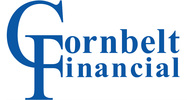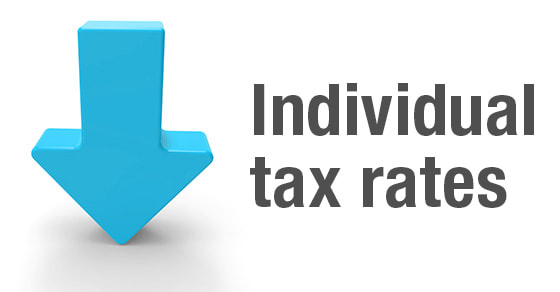|
The IRS has just announced that it will begin accepting 2017 income tax returns on January 29. You may be more concerned about the April 17 filing deadline, or even the extended deadline of October 15(if you file for an extension by April 17). After all, why go through the hassle of filing your return earlier than you have to?
But it can be a good idea to file as close to January 29 as possible: Doing so helps protect you from tax identity theft. All-too-common scam Here’s why early filing helps: In an all-too-common scam, thieves use victims’ personal information to file fraudulent tax returns electronically and claim bogus refunds. This is usually done early in the tax filing season. When the real taxpayers file, they’re notified that they’re attempting to file duplicate returns. A victim typically discovers the fraud after he or she files a tax return and is informed by the IRS that the return has been rejected because one with the same Social Security number has already been filed for the same tax year. The IRS then must determine who the legitimate taxpayer is. Tax identity theft can cause major headaches to straighten out and significantly delay legitimate refunds. But if you file first, it will be the tax return filed by a potential thief that will be rejected — not yours. The IRS is working with the tax industry and states to improve safeguards to protect taxpayers from tax identity theft. But filing early may be your best defense. W-2s and 1099s Of course, in order to file your tax return, you’ll need to have your W-2s and 1099s. So another key date to be aware of is January 31 — the deadline for employers to issue 2017 Form W-2 to employees and, generally, for businesses to issue Form 1099 to recipients of any 2017 interest, dividend or reportable miscellaneous income payments. If you don’t receive a W-2 or 1099, first contact the entity that should have issued it. If by mid-February you still haven’t received it, you can contact the IRS for help. Earlier refunds Of course, if you’ll be getting a refund, another good thing about filing early is that you’ll get your refund sooner. The IRS expects over 90% of refunds to be issued within 21 days. E-filing and requesting a direct deposit refund generally will result in a quicker refund and also can be more secure. If you have questions about tax identity theft or would like help filing your 2017 return early, please contact us. © 2018
0 Comments
Although the drop of the corporate tax rate from a top rate of 35% to a flat rate of 21% may be one of the most talked about provisions of the Tax Cuts and Jobs Act (TCJA), C corporations aren’t the only type of entity significantly benefiting from the new law. Owners of noncorporate “pass-through” entities may see some major — albeit temporary — relief in the form of a new deduction for a portion of qualified business income (QBI).
A 20% deduction For tax years beginning after December 31, 2017, and before January 1, 2026, the new deduction is available to individuals, estates and trusts that own interests in pass-through business entities. Such entities include sole proprietorships, partnerships, S corporations and, typically, limited liability companies (LLCs). The deduction generally equals 20% of QBI, subject to restrictions that can apply if taxable income exceeds the applicable threshold — $157,500 or, if married filing jointly, $315,000. QBI is generally defined as the net amount of qualified items of income, gain, deduction and loss from any qualified business of the noncorporate owner. For this purpose, qualified items are income, gain, deduction and loss that are effectively connected with the conduct of a U.S. business. QBI doesn’t include certain investment items, reasonable compensation paid to an owner for services rendered to the business or any guaranteed payments to a partner or LLC member treated as a partner for services rendered to the partnership or LLC. The QBI deduction isn’t allowed in calculating the owner’s adjusted gross income (AGI), but it reduces taxable income. In effect, it’s treated the same as an allowable itemized deduction. The limitations For pass-through entities other than sole proprietorships, the QBI deduction generally can’t exceed the greater of the owner’s share of:
Another restriction is that the QBI deduction generally isn’t available for income from specified service businesses. Examples include businesses that involve investment-type services and most professional practices (other than engineering and architecture). The W-2 wage limitation and the service business limitation don’t apply as long as your taxable income is under the applicable threshold. In that case, you should qualify for the full 20% QBI deduction. Careful planning required Additional rules and limits apply to the QBI deduction, and careful planning will be necessary to gain maximum benefit. Please contact us for more details. © 2018 Meals, entertainment and transportation may cost businesses more under the TCJAAlong with tax rate reductions and a new deduction for pass-through qualified business income, the new tax law brings the reduction or elimination of tax deductions for certain business expenses. Two expense areas where the Tax Cuts and Jobs Act (TCJA) changes the rules — and not to businesses’ benefit — are meals/entertainment and transportation. In effect, the reduced tax benefits will mean these expenses are more costly to a business’s bottom line.
Meals and entertainment Prior to the TCJA, taxpayers generally could deduct 50% of expenses for business-related meals and entertainment. Meals provided to an employee for the convenience of the employer on the employer’s business premises were 100% deductible by the employer and tax-free to the recipient employee. Under the new law, for amounts paid or incurred after December 31, 2017, deductions for business-related entertainment expenses are disallowed. Meal expenses incurred while traveling on business are still 50% deductible, but the 50% limit now also applies to meals provided via an on-premises cafeteria or otherwise on the employer’s premises for the convenience of the employer. After 2025, the cost of meals provided through an on-premises cafeteria or otherwise on the employer’s premises will no longer be deductible. Transportation The TCJA disallows employer deductions for the cost of providing commuting transportation to an employee (such as hiring a car service), unless the transportation is necessary for the employee’s safety. The new law also eliminates employer deductions for the cost of providing qualified employee transportation fringe benefits. Examples include parking allowances, mass transit passes and van pooling. These benefits are, however, still tax-free to recipient employees. Transportation expenses for employee work-related travel away from home are still deductible (and tax-free to the employee), as long as they otherwise qualify for such tax treatment. (Note that, for 2018 through 2025, employees can’t deduct unreimbursed employee business expenses, such as travel expenses, as a miscellaneous itemized deduction.) Assessing the impact The TCJA’s changes to deductions for meals, entertainment and transportation expenses may affect your business’s budget. Depending on how much you typically spend on such expenses, you may want to consider changing some of your policies and/or benefits offerings in these areas. We’d be pleased to help you assess the impact on your business. © 2018 Under the Tax Cuts and Jobs Act (TCJA), individual income tax rates generally go down for 2018 through 2025. But that doesn’t necessarily mean your income tax liability will go down. The TCJA also makes a lot of changes to tax breaks for individuals, reducing or eliminating some while expanding others. The total impact of all of these changes is what will ultimately determine whether you see reduced taxes. One interrelated group of changes affecting many taxpayers are those to personal exemptions, standard deductions and the child credit.
Personal exemptions For 2017, taxpayers can claim a personal exemption of $4,050 each for themselves, their spouses and any dependents. For families with children and/or other dependents, such as elderly parents, these exemptions can really add up. For 2018 through 2025, the TCJA suspends personal exemptions. This will substantially increase taxable income for large families. However, enhancements to the standard deduction and child credit, combined with lower tax rates, might mitigate this increase. Standard deduction Taxpayers can choose to itemize certain deductions on Schedule A or take the standard deduction based on their filing status instead. Itemizing deductions when the total will be larger than the standard deduction saves tax, but it makes filing more complicated. For 2017, the standard deductions are $6,350 for singles and separate filers, $9,350 for head of household filers, and $12,700 for married couples filing jointly. The TCJA nearly doubles the standard deductions for 2018 to $12,000 for singles and separate filers, $18,000 for heads of households, and $24,000 for joint filers. (These amounts will be adjusted for inflation for 2019 through 2025.) For some taxpayers, the increased standard deduction could compensate for the elimination of the exemptions, and perhaps even provide some additional tax savings. But for those with many dependents or who itemize deductions, these changes might result in a higher tax bill — depending in part on the extent to which they can benefit from enhancements to the child credit. Child credit Credits can be more powerful than exemptions and deductions because they reduce taxes dollar-for-dollar, rather than just reducing the amount of income subject to tax. For 2018 through 2025, the TCJA doubles the child credit to $2,000 per child under age 17. The new law also makes the child credit available to more families than in the past. For 2018 through 2025, the credit doesn’t begin to phase out until adjusted gross income exceeds $400,000 for joint filers or $200,000 for all other filers, compared with the 2017 phaseout thresholds of $110,000 and $75,000, respectively. The TCJA also includes, for 2018 through 2025, a $500 credit for qualifying dependents other than qualifying children. Tip of the iceberg Many factors will influence the impact of the TCJA on your tax liability for 2018 and beyond. And what’s discussed here is just the tip of the iceberg. For example, the TCJA also makes many changes to itemized deductions. For help assessing the impact on your tax situation, please contact us. © 2018 While many provisions of the Tax Cuts and Jobs Act (TCJA) will save businesses tax, the new law also reduces or eliminates some tax breaks for businesses. One break it eliminates is the Section 199 deduction, commonly referred to as the “manufacturers’ deduction.” When it’s available, this potentially valuable tax break can be claimed by many types of businesses beyond just manufacturing companies. Under the TCJA, 2017 is the last tax year noncorporate taxpayers can take the deduction (2018 for C corporation taxpayers).
The basics The Sec. 199 deduction, also called the “domestic production activities deduction,” is 9% of the lesser of qualified production activities income or taxable income. The deduction is also limited to 50% of W-2 wages paid by the taxpayer that are allocable to domestic production gross receipts (DPGR). Yes, the deduction is available to traditional manufacturers. But businesses engaged in activities such as construction, engineering, architecture, computer software production and agricultural processing also may be eligible. The deduction isn’t allowed in determining net self-employment earnings and generally can’t reduce net income below zero. But it can be used against the alternative minimum tax. Calculating DPGR To determine a company’s Sec. 199 deduction, its qualified production activities income must be calculated. This is the amount of DPGR exceeding the cost of goods sold and other expenses allocable to that DPGR. Most companies will need to allocate receipts between those that qualify as DPGR and those that don’t • unless less than 5% of receipts aren’t attributable to DPGR. DPGR can come from a number of activities, including the construction of real property in the United States, as well as engineering or architectural services performed stateside to construct real property. It also can result from the lease, rental, licensing or sale of qualifying production property, such as tangible personal property (for example, machinery and office equipment), computer software, and master copies of sound recordings. The property must have been manufactured, produced, grown or extracted in whole or “significantly” within the United States. While each situation is assessed on its merits, the IRS has said that, if the labor and overhead incurred in the United States accounted for at least 20% of the total cost of goods sold, the activity typically qualifies. Learn more Contact us to learn whether this potentially powerful deduction could reduce your business’s tax liability when you file your 2017 return. We can also help address any questions you may have about other business tax breaks that have been reduced or eliminated by the TCJA. © 2018 The Tax Cuts and Jobs Act (TCJA) generally reduces individual tax rates for 2018 through 2025. It maintains seven individual income tax brackets but reduces the rates for all brackets except 10% and 35%, which remain the same.
It also makes some adjustments to the income ranges each bracket covers. For example, the 2017 top rate of 39.6% kicks in at $418,401 of taxable income for single filers and $470,701 for joint filers, but the reduced 2018 top rate of 37% takes effect at $500,001 and $600,001, respectively. Below is a look at the 2018 brackets under the TCJA. Keep in mind that the elimination of the personal exemption, changes to the standard and many itemized deductions, and other changes under the new law could affect the amount of your income that’s subject to tax. Contact us for help assessing what your tax rate likely will be for 2018. Single individuals Taxable incomeTax Not over $9,525 - 10% of the taxable income Over $9,525 but not over $38,700 - $952.50 plus 12% of the excess over $9,525 Over $38,700 but not over $82,500 - $4,453.50 plus 22% of the excess over $38,700 Over $82,500 but not over $157,500 - $14,089.50 plus 24% of the excess over $82,500 Over $157,500 but not over $200,000 - $32,089.50 plus 32% of the excess over $157,500 Over $200,000 but not over $500,000 - $45,689.50 plus 35% of the excess over $200,000 Over $500,000 - $150,689.50 plus 37% of the excess over $500,000 Heads of households Taxable incomeTax Not over $13,600 - 10% of the taxable income Over $13,600 but not over $51,800 - $1,360 plus 12% of the excess over $13,600 Over $51,800 but not over $82,500 - $5,944 plus 22% of the excess over $51,800 Over $82,500 but not over $157,500 - $12,698 plus 24% of the excess over $82,500 Over $157,500 but not over $200,000 - $30,698 plus 32% of the excess over $157,500 Over $200,000 but not over $500,000 - $44,298 plus 35% of the excess over $200,000 Over $500,000 - $149,298 plus 37% of the excess over $500,000 Married individuals filing joint returns and surviving spouses Taxable incomeTax Not over $19,050 - 10% of the taxable income Over $19,050 but not over $77,400 - $1,905 plus 12% of the excess over $19,050 Over $77,400 but not over $165,000 - $8,907 plus 22% of the excess over $77,400 Over $165,000 but not over $315,000 - $28,179 plus 24% of the excess over $165,000 Over $315,000 but not over $400,000 - $64,179 plus 32% of the excess over $315,000 Over $400,000 but not over $600,000 - $91,379 plus 35% of the excess over $400,000 Over $600,000 - $161,379 plus 37% of the excess over $600,000 Married individuals filing separate returns Taxable incomeTax Not over $9,525 - 10% of the taxable income Over $9,525 but not over $38,700 - $952.50 plus 12% of the excess over $9,525 Over $38,700 but not over $82,500 - $4,453.50 plus 22% of the excess over $38,700 Over $82,500 but not over $157,500 - $14,089.50 plus 24% of the excess over $82,500 Over $157,500 but not over $200,000 - $32,089.50 plus 32% of the excess over $157,500 Over $200,000 but not over $300,000 - $45,689.50 plus 35% of the excess over $200,000 Over $300,000 - $80,689.50 plus 37% of the excess over $300,000 © 2018 The Tax Cuts and Jobs Act (TCJA) enhances some tax breaks for businesses while reducing or eliminating others. One break it enhances — temporarily — is bonus depreciation. While most TCJA provisions go into effect for the 2018 tax year, you might be able to benefit from the bonus depreciation enhancements when you file your 2017 tax return.
Pre-TCJA bonus depreciation Under pre-TCJA law, for qualified new assets that your business placed in service in 2017, you can claim a 50% first-year bonus depreciation deduction. Used assets don’t qualify. This tax break is available for the cost of new computer systems, purchased software, vehicles, machinery, equipment, office furniture, etc. In addition, 50% bonus depreciation can be claimed for qualified improvement property, which means any qualified improvement to the interior portion of a nonresidential building if the improvement is placed in service after the date the building is placed in service. But qualified improvement costs don’t include expenditures for the enlargement of a building, an elevator or escalator, or the internal structural framework of a building. TCJA expansion The TCJA significantly expands bonus depreciation: For qualified property placed in service between September 28, 2017, and December 31, 2022 (or by December 31, 2023, for certain property with longer production periods), the first-year bonus depreciation percentage increases to 100%. In addition, the 100% deduction is allowed for not just new but also used qualifying property. The new law also allows 100% bonus depreciation for qualified film, television and live theatrical productions placed in service on or after September 28, 2017. Productions are considered placed in service at the time of the initial release, broadcast or live commercial performance. Beginning in 2023, bonus depreciation is scheduled to be reduced 20 percentage points each year. So, for example, it would be 80% for property placed in service in 2023, 60% in 2024, etc., until it would be fully eliminated in 2027. For certain property with longer production periods, the reductions are delayed by one year. For example, 80% bonus depreciation would apply to long-production-period property placed in service in 2024. Bonus depreciation is only one of the business tax breaks that have changed under the TCJA. Contact us for more information on this and other changes that will impact your business. © 2018 Business owners may not be able to set aside as much as they’d like in tax-advantaged retirement plans. Typically, they’re older and more highly compensated than their employees, but restrictions on contributions to 401(k) and profit-sharing plans can hamper retirement-planning efforts. One solution may be a cash balance plan.
Defined benefit plan with a twist The two most popular qualified retirement plans — 401(k) and profit-sharing plans — are defined contribution plans. These plans specify the amount that goes into an employee’s retirement account today, typically a percentage of compensation or a specific dollar amount. In contrast, a cash balance plan is a defined benefit plan, which specifies the amount a participant will receive in retirement. But unlike traditional defined benefit plans, such as pensions, cash balance plans express those benefits in the form of a 401(k)-style account balance, rather than a formula tied to years of service and salary history. The plan allocates annual “pay credits” and “interest credits” to hypothetical employee accounts. This allows participants to earn benefits more uniformly over their careers, and provides a clearer picture of benefits than a traditional pension plan. Greater savings for owners A cash balance plan offers significant advantages for business owners — particularly those who are behind on their retirement saving and whose employees are younger and lower-paid. In 2017, the IRS limits employer contributions and employee deferrals to defined contribution plans to $54,000 ($60,000 for employees age 50 or older). And nondiscrimination rules, which prevent a plan from unfairly favoring highly compensated employees (HCEs), can reduce an owner’s contributions even further. But cash balance plans aren’t bound by these limits. Instead, as defined benefit plans, they’re subject to a cap on annual benefit payouts in retirement (currently, $215,000), and the nondiscrimination rules require that only benefits for HCEs and non-HCEs be comparable. Contributions may be as high as necessary to fund those benefits. Therefore, a company may make sizable contributions on behalf of owner/employees approaching retirement (often as much as three or four times defined contribution limits), and relatively smaller contributions on behalf of younger, lower-paid employees. There are some potential risks. The most notable one is that, unlike with profit-sharing plans, you can’t reduce or suspend contributions during difficult years. So, before implementing a cash balance plan, it’s critical to ensure that your company’s cash flow will be steady enough to meet its funding obligations. Right for you? Although cash balance plans can be more expensive than defined contribution plans, they’re a great way to turbocharge your retirement savings. We can help you decide whether one might be right for you. © 2017 |
AuthorAdam Carr, MBA, EA Archives
June 2024
Categories
All
|









 RSS Feed
RSS Feed

